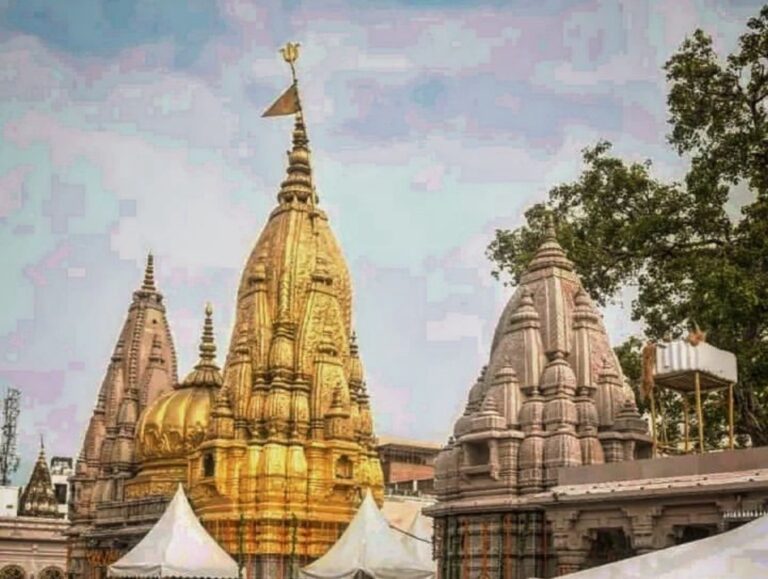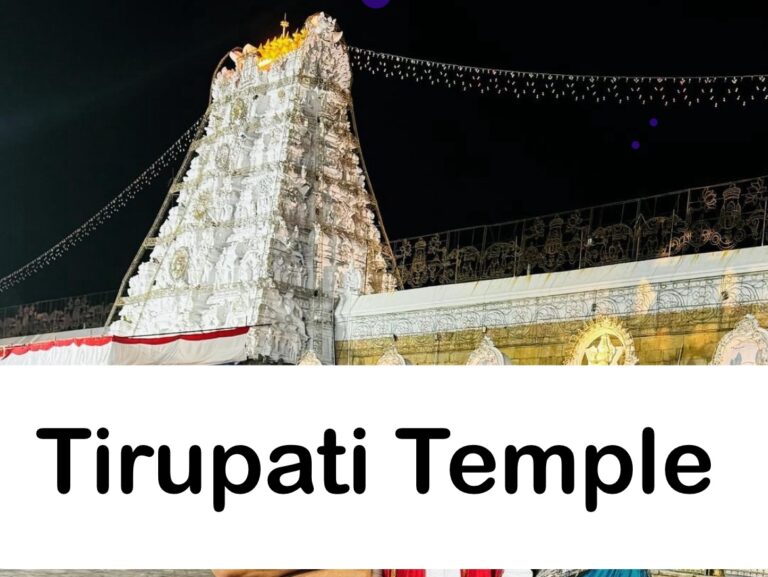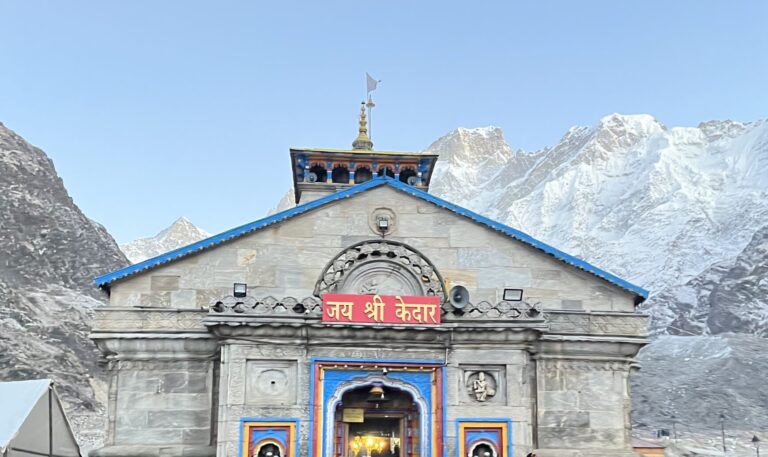Story of 12 Jyotirlingas of Lord Shiva
India, a land steeped in spirituality and mysticism, is home to the 12 Jyotirlingas of Lord Shiva where the divine manifests as an infinite pillar of light. These shrines are not just emblematic of religious fervor but are also a testament to the country’s rich cultural tapestry and architectural grandeur.
What is a Jyotirlinga?
A Jyotirlinga or Jyotirlingam is a devotional representation of Lord Shiva, where ‘Jyoti’ means radiance and ‘Linga’ signifies a sign or symbol. According to Hindu legends, once, a fierce debate broke out between Lord Brahma and Lord Vishnu over their supremacy. To resolve this, Shiva pierced the three worlds as an endless pillar of light—the Jyotirlinga¹. Brahma and Vishnu searched for the ends but failed, realizing the futility of their quarrel and the supremacy of Shiva¹.
The 12 Sanctuaries of Light
Each Jyotirlinga site is a different manifestation of Shiva, symbolizing various aspects of the divine. Here’s a glimpse into the sanctity and splendor of these 12 sites:
Somnath in Gujarat
The eternal shrine that has withstood the ravages of time and human invasions.
Historical Significance:
Somnath is known as the “Protector of the Moon God” and has a rich history that dates back to ancient times. The name ‘Somnath’ suggests “Lord of the Soma,” an epithet of Shiva. The Skanda Purana, in a chapter on Prabhasa Khanda, describes the emergence of this Jyotirlinga. According to legend, the moon was married to the 27 daughters of Daksha Prajapati and was partial to Rohini. The other daughters complained to their father, who cursed the moon to wane into nothingness. In penance, the moon bathed at the Saraswati River at this site to regain his light. Pleased with his devotion, Shiva restored him to his full form, hence the name Somnath
Mallikarjuna in Andhra Pradesh:
A symbol of unity, nestled on the Shri Shaila Mountain.
Historical Significance
Lord Shiva and Goddess Parvati couldn’t decide which of their sons, Ganesha or Kartikeya, should get married first. They proposed a challenge: whoever circumnavigated the world first would win. Kartikeya set off on his peacock, but Ganesha simply circled his parents, stating they represented the world to him. Impressed by Ganesha’s wisdom, Shiva and Parvati married him off to Siddhi (spiritual power) and Riddhi (prosperity). When Kartikeya returned and learned about this, he was upset and chose to remain celibate, residing on Mount Krounch. His parents visited him there, leading to the establishment of the Mallikarjuna Jyotirlinga as a shrine for both Shiva and Parvati.
Mahakaleshwar in Madhya Pradesh:
The protector of death and lord of time, residing in the ancient city of Ujjain.
Historical Significance :
The Mahakaleshwar Jyotirlinga in Ujjain is believed to be Swayambhu, meaning self-manifested, deriving its power from within itself, unlike other lingams that are ritually established and invested with mantra-shakti1. This self-manifested lingam is revered as Mahakaleshwar, the Lord of Time, and represents the dissolution aspect of Shiva, where all creation is absorbed back into the infinite
Omkareshwar in Madhya Pradesh:
The lord of the Om sound, located on the sacred island shaped like the Om sign.
Historical Significance:
King Mandhata: According to Hindu mythology, King Mandhata, a righteous ruler, performed intense penance to seek Lord Shiva’s blessings. Pleased with his devotion, Shiva appeared before him and granted his wish. The king requested a divine lingam (a representation of Lord Shiva) to be established on an island in the Narmada River. This island came to be known as Omkareshwar.
Kedarnath in Uttarakhand:
The northernmost shrine, a serene abode amidst the snow-clad peaks.
Historical Significance:
According to Hindu mythology, after the Mahabharata war, the Pandavas sought to cleanse themselves of the sin of fratricide. Their advisor guided them to seek Lord Shiva’s forgiveness. In their quest for redemption, they embarked on intense penance in the serene environs of Kedarnath.
Bhimashankar in Maharashtra:
The shrine that resonates with the legend of the demon Bhima’s defeat.
Historical Significance:
The Asura Bhima’s Tale
Bhima, the Asura: In the Dakini forests on the Sahyadri Mountain ranges, an asura named Bhima resided with his mother, Karkati.Lord Shiva’s Intervention as Bhima’s wickedness disturbed the balance of the universe. Lord Shiva, in his compassionate form, appeared as Bhimashankar to quell the asura’s malevolence.A fierce battle ensued between Bhimashankar and Bhima. The divine light triumphed, and Bhima was defeated.The place where Bhimashankar manifested as a Jyotirlinga became a sacred abode—a beacon of divine energy and spiritual solace.
Kashi Vishwanath in Uttar Pradesh:
The cosmic pillar of light in the oldest living city, Varanasi.
The Manifestation of the Jyotirlinga
According to historical accounts, Varanasi is believed to be the first Jyotirlinga to manifest itself.The legend narrates that during a cosmic debate about their supremacy, Lord Shivaappeared as an infinite column of light (Jyotirlinga) in front of Brahma (the creator) and Vishnu (the preserver).This divine manifestation at Kashi Vishwanath Temple symbolized Shiva’s ultimate authority over other gods.
Trimbakeshwar in Maharashtra:
The source of the Godavari River, symbolizing the trio of creator, preserver, and destroyer.
The Origin of Godavari River
The sacred Godavari river is believed to originate near Trimbak.According to legend, sage Gautamaperformed intense penance, leading to the manifestation of the Godavari.The temple stands as a testament to this divine origin.
Vaidyanath in Jharkhand:
The healer of ailments and the compassionate one.
The Legend of Baidyanath Jyotirlinga
According to ancient legends, Ravana, the demon king of Lanka, performed intense penance in the Himalayan region to appease Lord Shiva. In his devotion, Ravana offered nine of his heads as an offering to Shiva. As he was about to sacrifice his tenth head, Lord Shiva appeared before him and expressed satisfaction with the offering.
Impressed by Ravana’s devotion, Shiva granted him a boon. Ravana requested to take the “Kamna Linga” to the island of Lanka and expressed his desire to move Shiva from Mount Kailash to Lanka. Shiva agreed but with a condition: if the lingam was placed en route, it would become the permanent abode of the deity and could never be moved.
As Ravana carried the lingam, celestial gods became worried. Seeking a resolution, they turned to Vishnu. Vishnu instructed Varuna, the deity associated with water, to enter Ravana’s stomach through a ritual called achamana(sipping water from the palm). Due to this, Ravana felt the need to urinate near Deoghar. Vishnu took the form of a cowherd named Baijuand handed the lingam to Ravana. When Ravana took a long time to relieve himself, Baiju became impatient and placed the lingam on the ground before leaving.
Upon returning, Ravana tried to lift the lingam but failed. Realizing that Lord Vishnu was behind this, he pressed his thumb onto the lingam before departing, partially damaging it. The Shiva lingam was then worshipped by Brahma, Vishnu, and other deities, leading to the construction of the Baidyanath Temple.
Nageshwar in Gujarat:
The lord of serpents, offering protection from all poisons.
Historical Significance:
In the forest of Darukavana, there lived a fierce demon named Daruk along with his wife, Daruka.Due to a boon from Goddess Parvati, the demons possessed great powers, which they abused to disturb Hindu festivities.Amidst the chaos, a devotee named Supriyacontinued performing daily Shiva Puja rites.She wore holy ash (Bhasma), donned Rudraksha beads, and chanted the Om Namah Shivay mantra unwaveringly.Touched by Supriya’s devotion, Lord Shiva appeared at the spot.A divine Jyotirlinga got established there, vanquishing the demons and liberating Supriya.
Bhima’s Discovery
- In Dwapar Yuga, the Pandava brother Bhima discovered a river full of cream and milk.In its midst, he found a Swayambhu Lingam—the exact spot where the Nageshwar temple stands today.
Rameshwaram in Tamil Nadu:
The southernmost pillar, bridging the gap between man and God.
Historical Significance
According to legend, after defeating the demon king Ravana in Lanka, Lord Ramasought to atone for the sin of killing Ravana—a Brahmin and a great devotee of Lord Shiva.On his way back from Lanka, Lord Rama worshipped Lord Shiva at this spot.Since there was no existing shrine for Shiva there, Lord Rama sent Hanuman to Mount Kailash to bring a lingam (a representation of Shiva) to establish in Rameshwaram.
Grishneshwar in Maharashtra:
The shrine that reiterates the power of faith and devotion.
Historical Significance
One legend tells the story of a woman named Kusuma who devotedly worshipped Lord Shiva.Kusuma would immerse the Shiva Linga in a tank daily as part of her prayers.Despite facing immense grief when her son was murdered, Kusuma’s unwavering faith and devotion continued.Lord Shiva, pleased with her dedication, brought her son back to life.In gratitude, Kusuma requested the Lord to stay, and thus, Lord Shiva manifested as a Jyotirlinga at Grishneshwar.
Significance of the Jyotirlingas
The Jyotirlingas are not just places of worship; they are the epicenters of cosmic energy that elevate the soul. Pilgrims from across the world visit these sites to seek blessings and experience the divine aura that pervades these holy spaces. Each Jyotirlinga is associated with a unique legend and holds a special place in the hearts of devotees².
Conclusion
The 12 Jyotirlingas of India are more than just symbols of religious significance; they are the beacons of divine presence. They remind us of the ultimate reality—that the universe’s creator, preserver, and destroyer resides within us and all around us. Embarking on a pilgrimage to these sites is not just a journey across the land but a voyage within, to discover the light of the divine in every heart.






